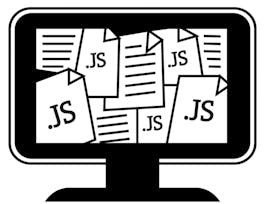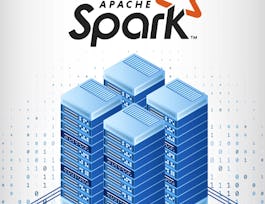With every smartphone and computer now boasting multiple processors, the use of functional ideas to facilitate parallel programming is becoming increasingly widespread. In this course, you'll learn the fundamentals of parallel programming, from task parallelism to data parallelism. In particular, you'll see how many familiar ideas from functional programming map perfectly to to the data parallel paradigm. We'll start the nuts and bolts how to effectively parallelize familiar collections operations, and we'll build up to parallel collections, a production-ready data parallel collections library available in the Scala standard library. Throughout, we'll apply these concepts through several hands-on examples that analyze real-world data, such as popular algorithms like k-means clustering.



Parallel programming
This course is part of Functional Programming in Scala Specialization


Instructors: Prof. Viktor Kuncak
Sponsored by Coursera Learning Team
60,236 already enrolled
(1,841 reviews)
Details to know

Add to your LinkedIn profile
See how employees at top companies are mastering in-demand skills

Build your subject-matter expertise
- Learn new concepts from industry experts
- Gain a foundational understanding of a subject or tool
- Develop job-relevant skills with hands-on projects
- Earn a shareable career certificate


Earn a career certificate
Add this credential to your LinkedIn profile, resume, or CV
Share it on social media and in your performance review

There are 4 modules in this course
We motivate parallel programming and introduce the basic constructs for building parallel programs on JVM and Scala. Examples such as array norm and Monte Carlo computations illustrate these concepts. We show how to estimate work and depth of parallel programs as well as how to benchmark the implementations.
What's included
9 videos5 readings3 programming assignments
We continue with examples of parallel algorithms by presenting a parallel merge sort. We then explain how operations such as map, reduce, and scan can be computed in parallel. We present associativity as the key condition enabling parallel implementation of reduce and scan.
What's included
6 videos2 programming assignments
We show how data parallel operations enable the development of elegant data-parallel code in Scala. We give an overview of the parallel collections hierarchy, including the traits of splitters and combiners that complement iterators and builders from the sequential case.
What's included
5 videos2 programming assignments
We give a glimpse of the internals of data structures for parallel computing, which helps us understand what is happening under the hood of parallel collections.
What's included
5 videos2 programming assignments
Instructors

Offered by
Why people choose Coursera for their career




Learner reviews
1,841 reviews
- 5 stars
59.64%
- 4 stars
28.13%
- 3 stars
9.23%
- 2 stars
2.22%
- 1 star
0.76%
Showing 3 of 1841
Reviewed on May 16, 2017
The assignment could be optimized and avoid to be more academic since it may make student lost focus and spend too much time on the question itself rather than the parallel programming
Reviewed on Feb 20, 2017
Truly great course. The assignments are designed very well. The instructor and videos were excellent. I only wish there had been more student participation in the forum.
Reviewed on Mar 31, 2017
Its a very good course! perhaps the in the practice code, before jumping into the problems they can provide a couple of simple examples/questions such that the main ideas are learnt.
Recommended if you're interested in Computer Science

Johns Hopkins University

Simplilearn

University of London

Open new doors with Coursera Plus
Unlimited access to 10,000+ world-class courses, hands-on projects, and job-ready certificate programs - all included in your subscription
Advance your career with an online degree
Earn a degree from world-class universities - 100% online
Join over 3,400 global companies that choose Coursera for Business
Upskill your employees to excel in the digital economy



